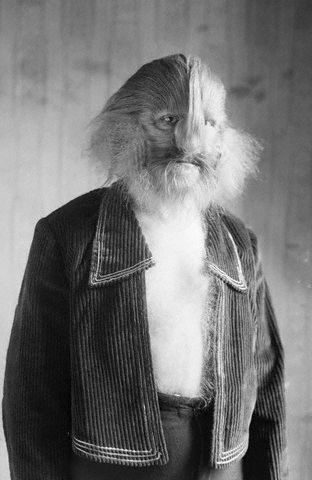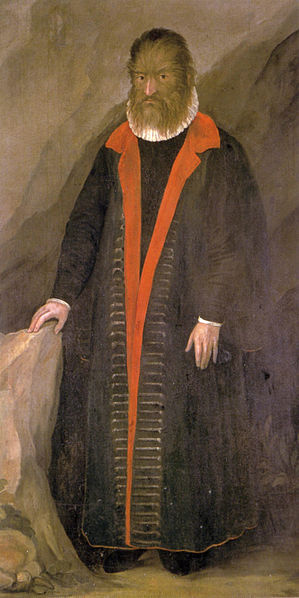


Hair Transplantation Surgery(2)
Hair transplantation is based on the ‘Theory of Donor dominance in Androgenic alopecia.’ If a graft is taken from an area destined to be permanently hair-bearing and transplanted to an area suffering from male patterns baldness, it will, after an initial period of effluvium, grow hair in its new site as long as it would have at its original site. This is the scientific basis of hair transplantation surgery.
TERMINOLOGY
Terminal hair is Androgen-dependent, Male-type hair on the face (mustache, beard, and sideburns) and on the body (chest, areola, linea alba, inner thighs). It increases in Hirsutism.
Vellus hair is Nonpigmented, Fine “Peach fuzz” hair covering the body in both children and adults. It increases in Hypertrichosis.
The Follicular unit graft (FUG) as described by Headington[1] includes 1–4 terminal hair follicles, one (or rarely two) vellus follicles, associated sebaceous lobules, insertion of erector pili muscle, perifollicular neurovascular network etc. This definition suggests that the unit is a Physiological entity rather than an anatomical one. For all practical purposes, it is best to describe a Follicular unit as an aggregation of hair shafts emerging from the scalp, in which the distance between the hairs is less than the distance to the nearest aggregation of hairs. This pattern has to be kept in mind while harvesting, dissecting, and transplanting hair to achieve maximal efficiency, and to give a natural appearance to the patient.
HAIR TRANSPLANTATION TECHNIQUE
Planning
Although age is no bar for hair transplantation, the pros and cons of a transplant need to be carefully evaluated in the younger patients. Patients between 20 and 30 years of age should have a stabilized rate of hair loss before they are considered for hair transplantation. A detailed family history is useful in assessing hair loss and planning a new hairline.
The Colour, Quality, and Density of the donor hair, as well as the Contrast between the hair and the skin colours, are important factors that affect the result. The lesser the Contrast between the donor hair and the skin, the better is the result.[2] It is also noted that Frizzy, Curly, or Wavy hair are advantageous characteristics in transplanted hair.
Single hair grafts are used to create a natural Hairline. The Planning of the Hairline is one of the most important steps in hair transplantation. The Hairline is the most visible landmark and the Quality of work of a surgeon is often judged by the Quality of the hairline. As suggested by Michaelangelo, to locate the ideal hairline in a bald patient, it is necessary to divide the face into three equal segments.[3] In the midline, the Hairline starts at least 8 cm from the Glabella. A Curve sweeps around to the lateral side of the forehead from the center. At this point, the sides of the hairline should be oriented parallel to the curve when the subject is looking straight ahead. The lateral hairlines are usually 9.5~11.5 cm above the Lateral canthus of the eyes. The temporal angles should form relatively Sharp right angles or Acute angles in most men, but these angles should be more Rounded in women. The hairline shape also varies according to the variation of the shape of the face—Round, Oval or Triangular. The patient's desires and constraints are also other factors that can affect the shape of the hairline.
Usually 250~300 single hair (micro) grafts will be necessary to create a new hairline in any individual. The micro-grafts in the hairline should be placed in an irregular Saw-toothed pattern of Macro- and Micro-irregularity[4] to give a natural appearance. Behind the hairline, two-hair FUGs are used to provide new hair. Three or four hair FUGs are used just further behind. The less ideal the hair and skin characteristics, the more important it is to use smaller grafts. To give good density in alopecic recipient areas, some surgeons use punch grafts that are 1, 1.25, and 1.5 mm in diameter, behind the hairline. The punch grafts have the advantage of removing a circular area of bald tissue where the grafts will be placed. These punch grafts should not be used in areas where hairs are already present as they would punch out existing hair and the surgery will be counterproductive. Punch grafts can however, be useful in areas of total baldness.
Preoperative preparation
The patient is asked to shampoo his head with Betadine surgical scrub on the day before, and on the morning of the surgery.
Preparation of the donor area
Local anaesthesia is used for the entire procedure. A solution is made from 30 mL of 2% lignocaine with 100 mL of normal saline, to which 1 mL of adrenaline (1:1000) is added. The hair in the Donor area (Occipital region) is trimmed to a length of 2~4 mm and the local anaesthetic solution is injected just below the donor area. The donor area is then Tumesced by injecting normal saline into the entire zone. After 10~20 minutes for complete haemostatic effect to minimize bleeding, the donor area should be turgid at the completion of Infiltration, because this provides excellent anaesthesia and results in minimum bleeding.
Harvesting
The donor strip can be harvested with a Single-bladed knife or a multiple-bladed knife containing three to seven blades. The multi-bladed knife harvests numerous (two to six) parallel strips of varying width (depending on the spacer used), which may be 1.5, 2, or 2.5 mm. These blind incisions with a multi-bladed knife increase the chance of follicular damage; therefore, it is better to use a Single or a Double-bladed knife. It is very important that while harvesting the donor area, the Blades remain Parallel to the Direction of the Hair so that the hair roots are not damaged. The hair in the Lower part of the Occipital area and the Temporal area are Finer, and these should be used to create a new Hairline. After the strip has been harvested, the gap can be closed either with staples or sutures. Some surgeons, including the author, prefer deep sutures in the galea or the subcutaneous tissue to reduce the width of the scar. The skin can be opposed by a running suture of 3-0 or 4-0 monofilament nylon, or any absorbable suture. Care is taken to take the bites close to the skin margin to avoid more damage to the tissues. Also, it is important to take the bites only up to the dermis so that the deeper hair roots are not damaged, and thus can be utilised in subsequent surgery.
Follicular Unit Extraction[5] is a technique that involves the removal of the intact Follicular unit directly from the Donor area using a 1 mm punch. The yield by this harvesting technique can decrease due to Transection and Avulsion injury to the follicular unit. Also, although marketed as a technique that leaves no scar in the donor area, it leaves multiple ‘Dot-scars’ in the donor area, which are larger than those left by the strip method.
Harvesting donor hairs which are white or light coloured is more difficult. Extra care has to be taken to preserve the hair follicles. To enhance visibility, these patients are instructed to dye the hair a few days before the procedure. Methylene blue can be injected in a very low concentration just before surgery into the donor area to help in identifying the grey hairs during dissection. Extra care is also required in patients undergoing a second procedure because scars from previous surgery, distort the direction of the hair in the donor area.



 留言列表
留言列表
